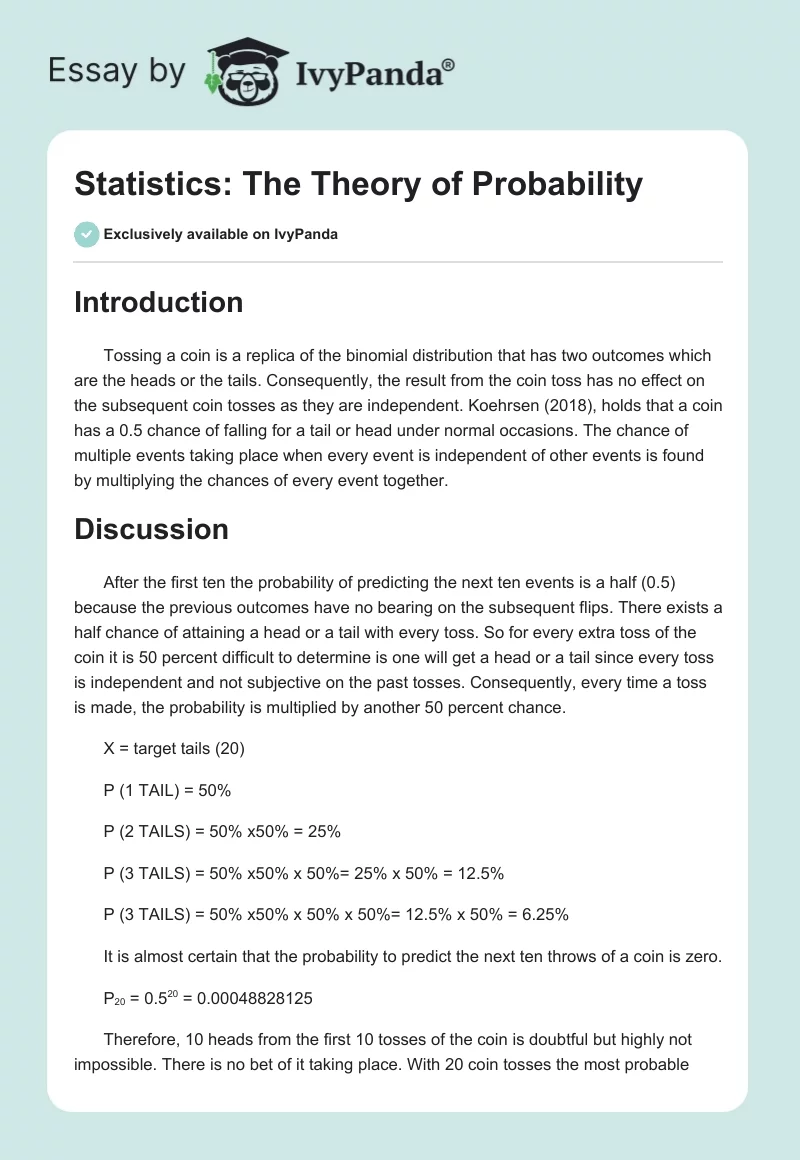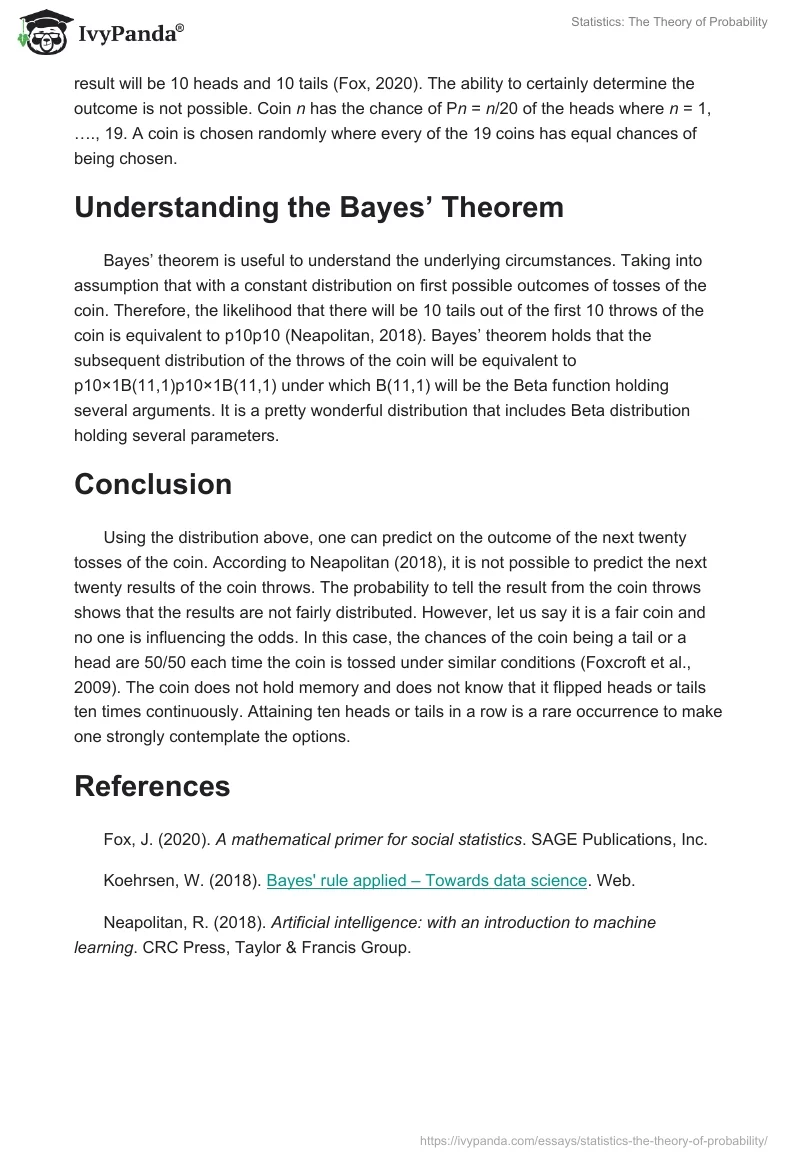Introduction
Tossing a coin is a replica of the binomial distribution that has two outcomes which are the heads or the tails. Consequently, the result from the coin toss has no effect on the subsequent coin tosses as they are independent. Koehrsen (2018), holds that a coin has a 0.5 chance of falling for a tail or head under normal occasions. The chance of multiple events taking place when every event is independent of other events is found by multiplying the chances of every event together.
Discussion
After the first ten the probability of predicting the next ten events is a half (0.5) because the previous outcomes have no bearing on the subsequent flips. There exists a half chance of attaining a head or a tail with every toss. So for every extra toss of the coin it is 50 percent difficult to determine is one will get a head or a tail since every toss is independent and not subjective on the past tosses. Consequently, every time a toss is made, the probability is multiplied by another 50 percent chance.
X = target tails (20)
P (1 TAIL) = 50%
P (2 TAILS) = 50% x50% = 25%
P (3 TAILS) = 50% x50% x 50%= 25% x 50% = 12.5%
P (3 TAILS) = 50% x50% x 50% x 50%= 12.5% x 50% = 6.25%
It is almost certain that the probability to predict the next ten throws of a coin is zero.
P20 = 0.520 = 0.00048828125
Therefore, 10 heads from the first 10 tosses of the coin is doubtful but highly not impossible. There is no bet of it taking place. With 20 coin tosses the most probable result will be 10 heads and 10 tails (Fox, 2020). The ability to certainly determine the outcome is not possible. Coin n has the chance of Pn = n/20 of the heads where n = 1, …., 19. A coin is chosen randomly where every of the 19 coins has equal chances of being chosen.
Understanding the Bayes’ Theorem
Bayes’ theorem is useful to understand the underlying circumstances. Taking into assumption that with a constant distribution on first possible outcomes of tosses of the coin. Therefore, the likelihood that there will be 10 tails out of the first 10 throws of the coin is equivalent to p10p10 (Neapolitan, 2018). Bayes’ theorem holds that the subsequent distribution of the throws of the coin will be equivalent to p10×1B(11,1)p10×1B(11,1) under which B(11,1) will be the Beta function holding several arguments. It is a pretty wonderful distribution that includes Beta distribution holding several parameters.
Conclusion
Using the distribution above, one can predict on the outcome of the next twenty tosses of the coin. According to Neapolitan (2018), it is not possible to predict the next twenty results of the coin throws. The probability to tell the result from the coin throws shows that the results are not fairly distributed. However, let us say it is a fair coin and no one is influencing the odds. In this case, the chances of the coin being a tail or a head are 50/50 each time the coin is tossed under similar conditions (Foxcroft et al., 2009). The coin does not hold memory and does not know that it flipped heads or tails ten times continuously. Attaining ten heads or tails in a row is a rare occurrence to make one strongly contemplate the options.
References
Fox, J. (2020). A mathematical primer for social statistics. SAGE Publications, Inc.
Koehrsen, W. (2018). Bayes’ rule applied – Towards data science. Web.
Neapolitan, R. (2018). Artificial intelligence: with an introduction to machine learning. CRC Press, Taylor & Francis Group.


